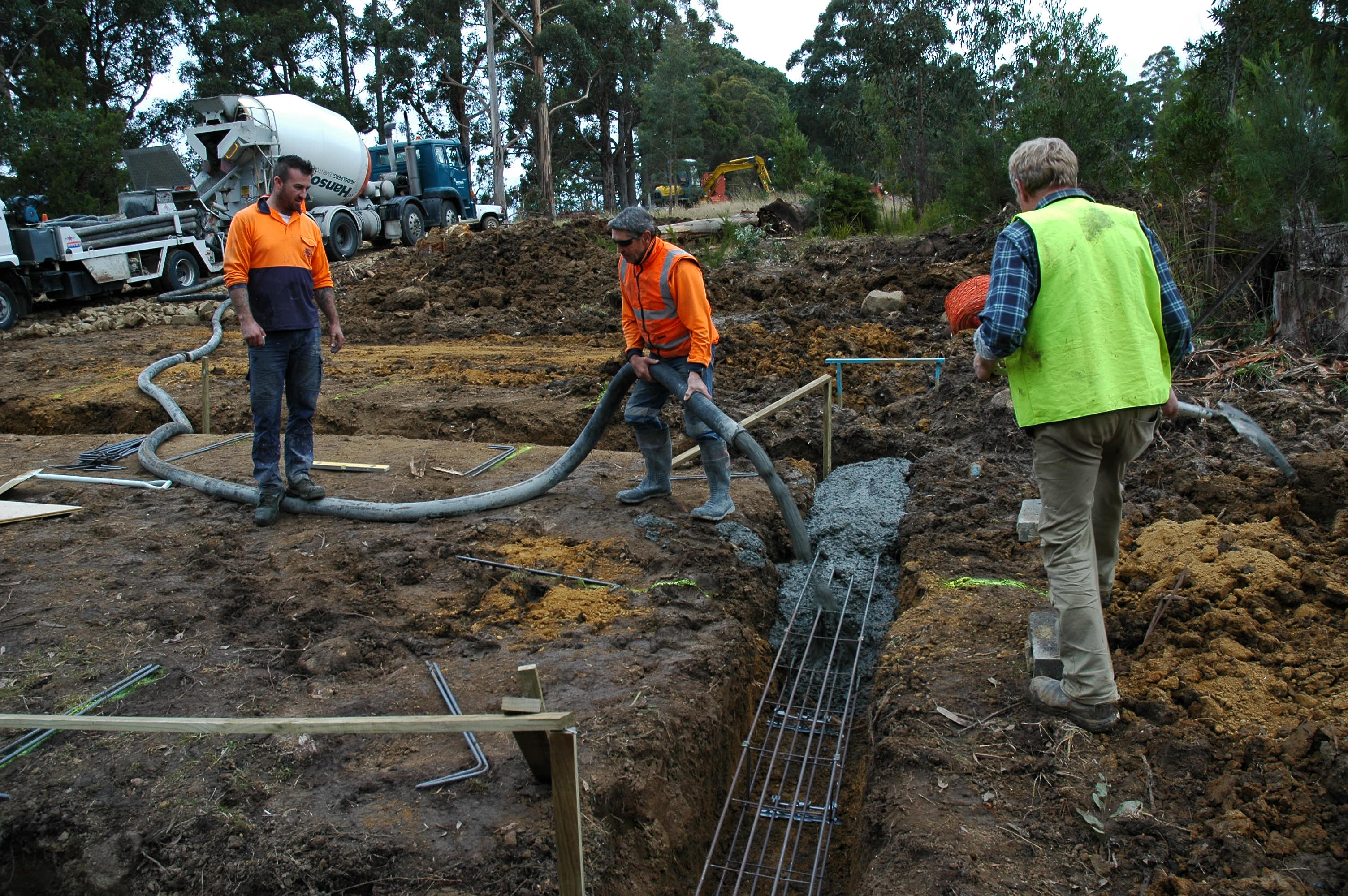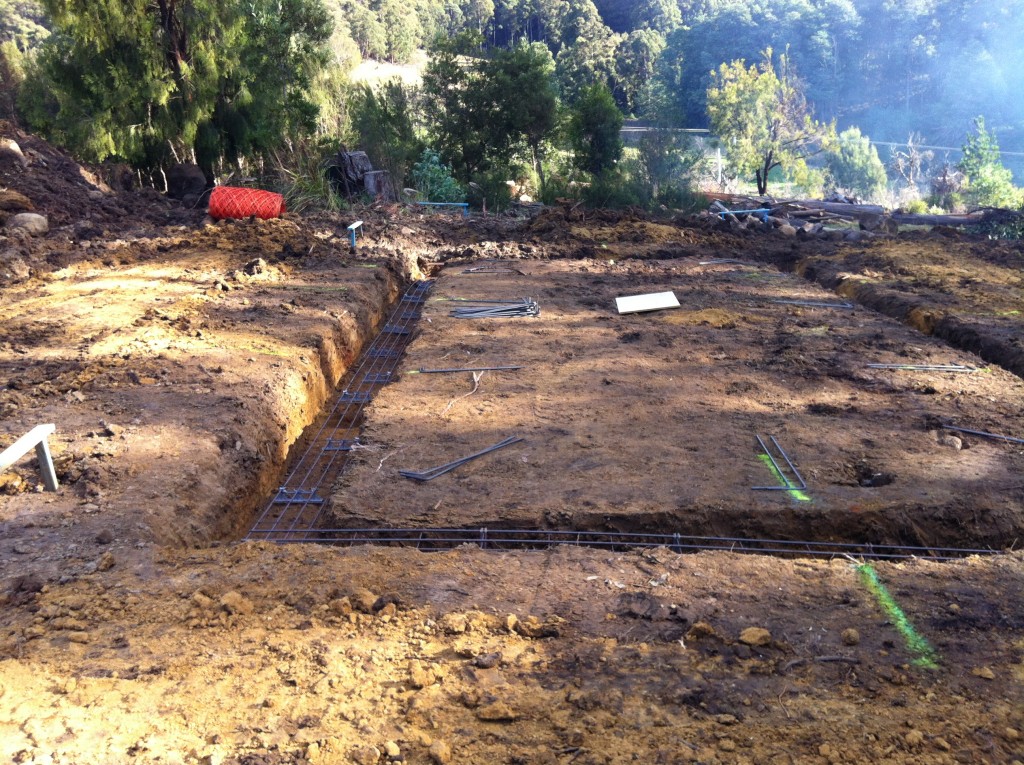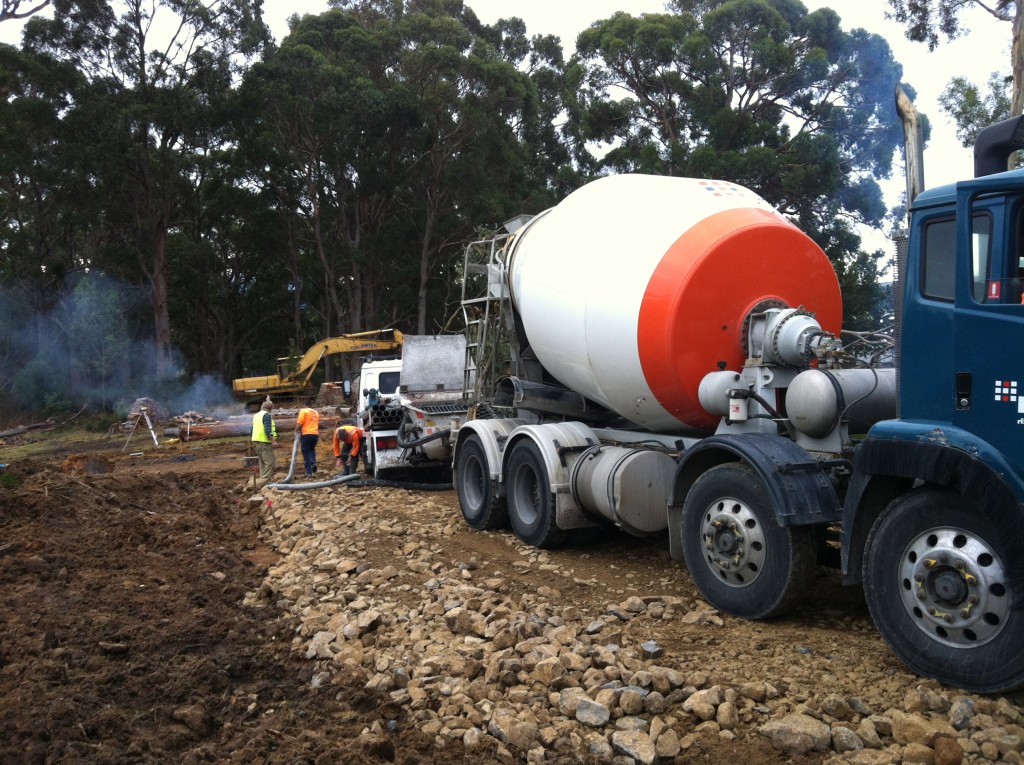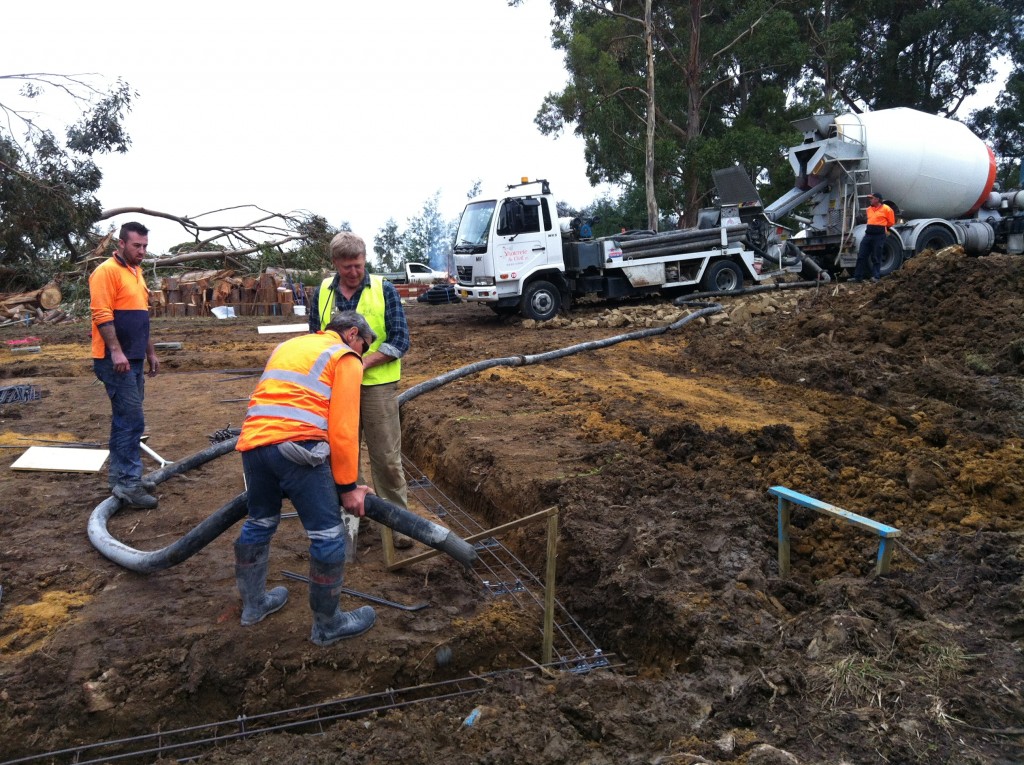Friday June 12
Solid base
Footings, or foundations, are what buildings are built on – they stop buildings from sinking into the mud or sliding down the hill. If you were to use the human body as an analogy, the footings would be, um, the foot. The rest of the building is literally built up from the foundations – therefore footings are very important. Footings are part of the substructure of a building and are designed by a structural engineer who will take into account the soil type (clay, sand, rock, etc) and the construction method. The footings used for 60khouse are called strip footings – trenches with reinforced concrete.
Beneath the strip footing are bored piers – these typically go down until you hit rock or ‘approved base’. The piers for 60k House vary from 0.3m – 0.7m deep and also have steel reinforcement inside.

The bored pier beneath the strip footing. The line of spray paint is to show where the pier is once the footing is filled with concrete
Inspections
A structural engineer or building surveyor are always required to inspect the footings (and steel reinforcement inside) before the concrete is poured. There are inspections due throughout the construction at various stages – this was the first. These stages are known as “mandatory notification” stages and it is the builder’s responsibility to inform the building surveyor of their intention to pour, cover up the framework, etc, to give the building surveyor an opportunity to inspect (they may then get the engineer to inspect on their behalf).
A concrete truck has a limited distance it can reach – usually the chute is around 3m long. A concrete pump truck can reach much further and makes it easier to pour concrete.
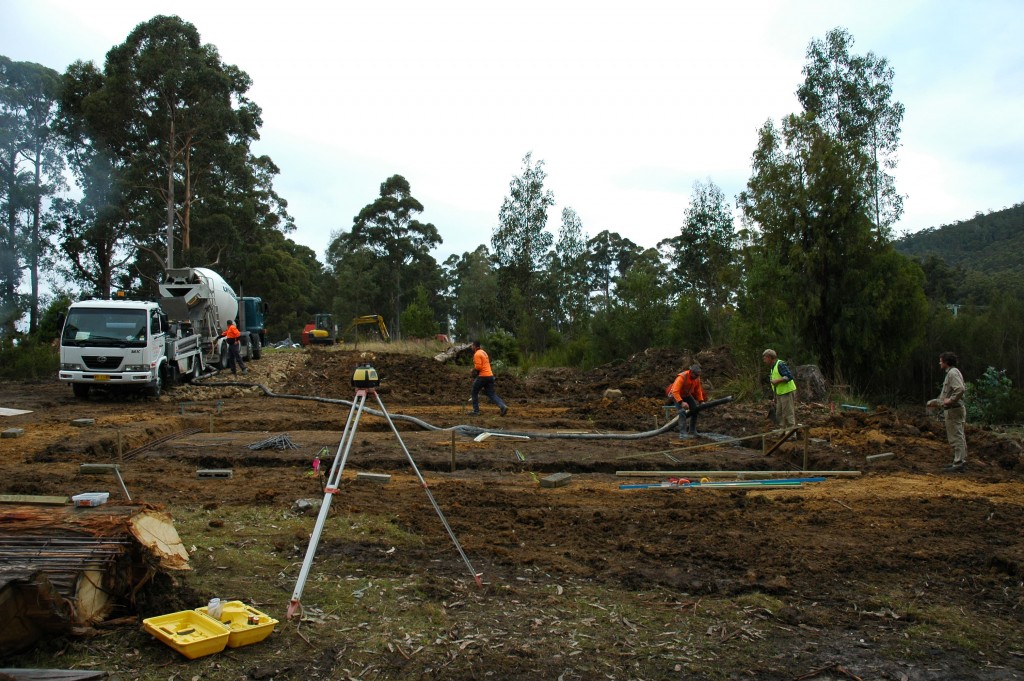
The stressful moment when the concrete pump gets blocked. The thing on the tripod is called a ‘dumpy’ and is used for getting levels on site
Overtime
When construction began on 60k House I was also working at the Dark MOFO festival during the evenings in Hobart. That made for some very long days: up early, leave town and drive to my site in the dark, arrive around 7:30am, work through until 3pm before racing back to town and off to work again until 11 at night. Luckily my neighbour Josh wandered over at just the right time to see what was going on and took my place doing the messy jobs.
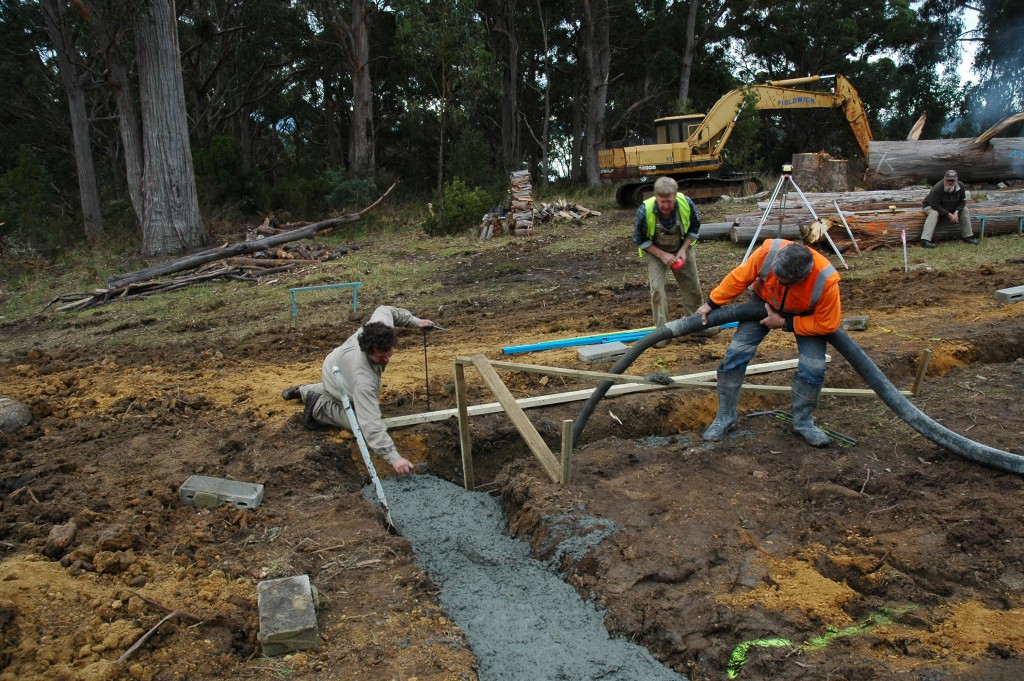
My neighbour Josh pushing the steel reinforcing into the bored pier so it is tied to the strip footing
Costs: pump truck – $651; concrete – $2,016; steel reinforcing – $1915
Disclaimer: Any advice contained within this blog is of a general nature only and cannot be relied upon. Details provided are in good faith and relate specifically to this project. Any author will not be held responsible for advice or information presented.
